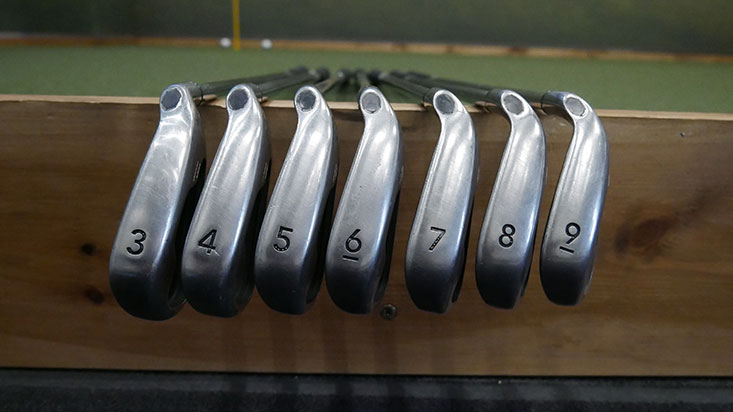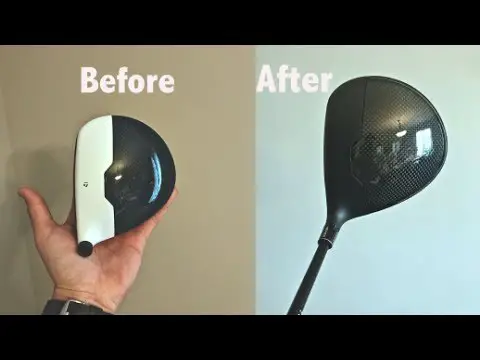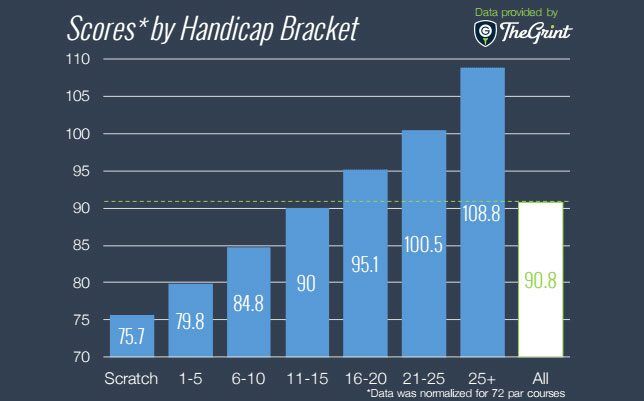9 Iron Vs Pitching Wedge
Golfers are always looking for ways to improve their game, and choosing the right club for each shot is a key part of that process. Two of the most versatile clubs in any golfer’s bag are the 9 iron and pitching wedge. While they may seem similar, there are important differences between these clubs that can affect the trajectory, distance, and spin of your shots.
The 9 iron and pitching wedge are both part of the iron family of clubs, but they have different loft angles and uses. The 9 iron typically has a loft angle of around 40 degrees, while the pitching wedge has a loft angle of around 46 degrees. This difference in loft angle can affect the trajectory and spin of your shots, as well as the distance you can achieve with each club.
Understanding how to use the 9 iron and pitching wedge effectively can help you improve your accuracy, distance control, and shotmaking ability. In this article, we’ll explore the differences between these two clubs, their uses for full shots, chipping and pitching, and specialty shots. We’ll also provide practice drills and tips for maintaining and caring for your clubs, as well as comparisons with other clubs in your bag. Whether you’re a beginner or a seasoned golfer, understanding the nuances of the 9 iron and pitching wedge can help you take your game to the next level.

The Differences Between 9 Iron and Pitching Wedge
The 9 iron and pitching wedge have different loft angles, clubhead sizes, shaft lengths, spin rates, bounce angles, and clubhead speeds. These differences can affect ball flight, distance control, accuracy, and turf interaction.
Loft Angle
The loft angle of a club affects the trajectory of the ball. The 9 iron typically has a loft angle of 42 to 48 degrees, while the pitching wedge has a loft angle of 44 to 50 degrees. The higher loft angle of the pitching wedge makes it easier to get the ball up in the air and stop it on the green. The 9 iron, on the other hand, is better for hitting lower shots with more roll.
Clubhead Size
The size of the clubhead can affect forgiveness and accuracy. The pitching wedge typically has a smaller clubhead than the 9 iron, making it more forgiving on mishits. However, the larger clubhead of the 9 iron can provide more accuracy and control.
Shaft Length
The length of the shaft can affect shotmaking ability. The 9 iron typically has a shorter shaft than the pitching wedge, making it easier to control the club and make precise shots.
Spin Rate
The spin rate of a club affects the amount of control you have over the ball. The pitching wedge typically produces more spin than the 9 iron, making it easier to stop the ball on the green.
Bounce Angle
The bounce angle of a club affects turf interaction. The pitching wedge typically has more bounce than the 9 iron, making it easier to hit shots from the rough and sand.
Clubhead Speed
The speed of the clubhead can affect shotmaking ability. The 9 iron typically has a slower clubhead speed than the pitching wedge, making it easier to control and make precise shots.
Choosing the Right Club
When deciding between a 9 iron and pitching wedge, it’s important to consider your needs based on your game and course conditions.
Identify Your Needs
Think about the types of shots you commonly hit and the distances you need to cover. Consider the course conditions, such as the firmness of the greens and the height of the rough.
Understand Your Swing
Understanding your swing can help you select the right club. If you have a fast swing speed, the 9 iron may be better for you because it will produce less spin and keep the ball lower. If you have a slower swing speed, the pitching wedge may be better for you because it will produce more spin and help you stop the ball on the green.
Consider Other Clubs in Your Bag
Think about the other clubs in your bag and how they complement each other. For example, if you have a gap wedge or sand wedge, you may not need a pitching wedge. If you have a strong hybrid or fairway wood, you may not need a 9 iron.
Importance of Club Fitting
Club fitting can help you select the right club for your game. A professional club fitter can analyze your swing and recommend the right loft, shaft length, and clubhead design for your needs.
Techniques for Using 9 Iron and Pitching Wedge
Knowing how to use each club effectively is important for improving your game.
Full Shots
For full shots, focus on keeping a smooth and consistent swing. Take note of the loft angle and use it to your advantage. The 9 iron can be used to hit lower shots with more roll, while the pitching wedge can be used to hit high shots with more spin. Experiment with different ball positions and swings to find the optimal trajectory and distance.
Chipping and Pitching Techniques
When chipping and pitching, the loft angle and bounce angle of the club are crucial. The pitching wedge can be used for higher shots with more spin, while the 9 iron can be used for lower shots with less spin. Practice different techniques, such as the bump-and-run and flop shots, to expand your shotmaking abilities.
Specialty Shots
The 9 iron and pitching wedge can also be used for specialized shots, such as punch shots and knockdown shots. These shots require different ball positions and swings, so experiment with different techniques to find the right fit for your game.
Sand Bunker Shots
When hitting out of sand bunkers, the bounce angle of the club is especially important. The pitching wedge can be used for bunker shots with more bounce, while the 9 iron can be used for bunker shots with less bounce. Practice different sand shots to improve your bunker play.
Practice Drills for Using 9 Iron and Pitching Wedge
Regular practice is essential for improving your game. Here are some drills to help you master your 9 iron and pitching wedge:
Distance Control Drills
Set up targets at different distances and practice hitting shots with both the 9 iron and pitching wedge. Focus on controlling your distance and accuracy. This will help you develop consistency and precision with both clubs.
Pitching and Chipping Drills
Practice different types of chipping and pitching shots, such as the bump-and-run and flop shots. Use different clubs and experiment with different techniques to improve your touch and shotmaking ability.
Specialty Shot Drills
Practice specialized shots, such as punch shots and knockdown shots, to expand your shotmaking abilities. Use different clubs and experiment with different ball positions and swings.
Sand Bunker Practice Drills
Practice different sand shots to improve your bunker play. Use both the 9 iron and pitching wedge to practice different bunker shots with varying bounce angles.
Maintaining and Caring for 9 Iron and Pitching Wedge
Proper care and maintenance of your clubs can prolong their life and optimize their performance. Here are some tips for maintaining and caring for your 9 iron and pitching wedge:
Cleaning and Storage
Clean your clubs regularly with a soft cloth and mild detergent. Store your clubs in a dry place and avoid leaving them in extreme temperatures or humidity.
Inspection and Maintenance
Inspect your clubs regularly for signs of wear and tear, such as cracks or rust. Replace worn grips and damaged clubheads as necessary. Keep the grooves of your clubs clean to optimize spin rate and control.
Club Replacement
Consider replacing your clubs if they become worn or damaged beyond repair. Consult with a professional club fitter to help you select the right replacement clubs for your game.
Comparison with Other Clubs
While the 9 iron and pitching wedge are often compared, it’s important to understand their place in your overall set of clubs. Here are some comparisons with other clubs:
Irons
The 9 iron is typically used for shots between 100 and 125 yards, while other irons are used for different distances. The pitching wedge is often used as the highest iron in a set, providing a smooth transition to the wedges.
Wedges
The pitching wedge is the lowest lofted wedge in a set, while other wedges, such as the gap wedge and sand wedge, provide more loft for specialized shots. The pitching wedge is versatile and can be used for full shots, chipping, and bunker play, while other wedges have specific uses.
Hybrids
Hybrids are often used as alternatives to long irons and fairway woods, providing easier launch and more forgiveness. They can be used for shots that require more distance than the 9 iron and pitching wedge, but less than a fairway wood.
Fairway Woods
Fairway woods are typically used for shots that require more distance than the 9 iron and pitching wedge, such as approach shots to par 5s and tee shots on long par 3s. They provide more distance and speed than irons, but less accuracy and control.
Conclusion
Choosing the right club for your game is essential for improving your golf game. The 9 iron and pitching wedge are two versatile clubs that can be used for a variety of shots. Understanding the differences between these clubs and how to use them effectively can help you improve your distance control, accuracy, and overall game. Remember to consider your individual needs, course conditions, and other clubs in your bag when selecting the right club for each shot. Practice regularly and maintain your clubs to optimize their performance and prolong their life.




